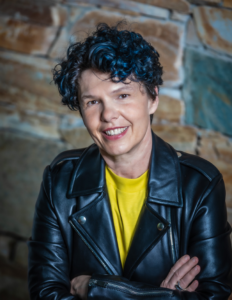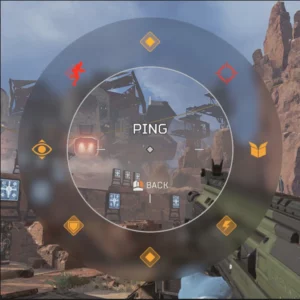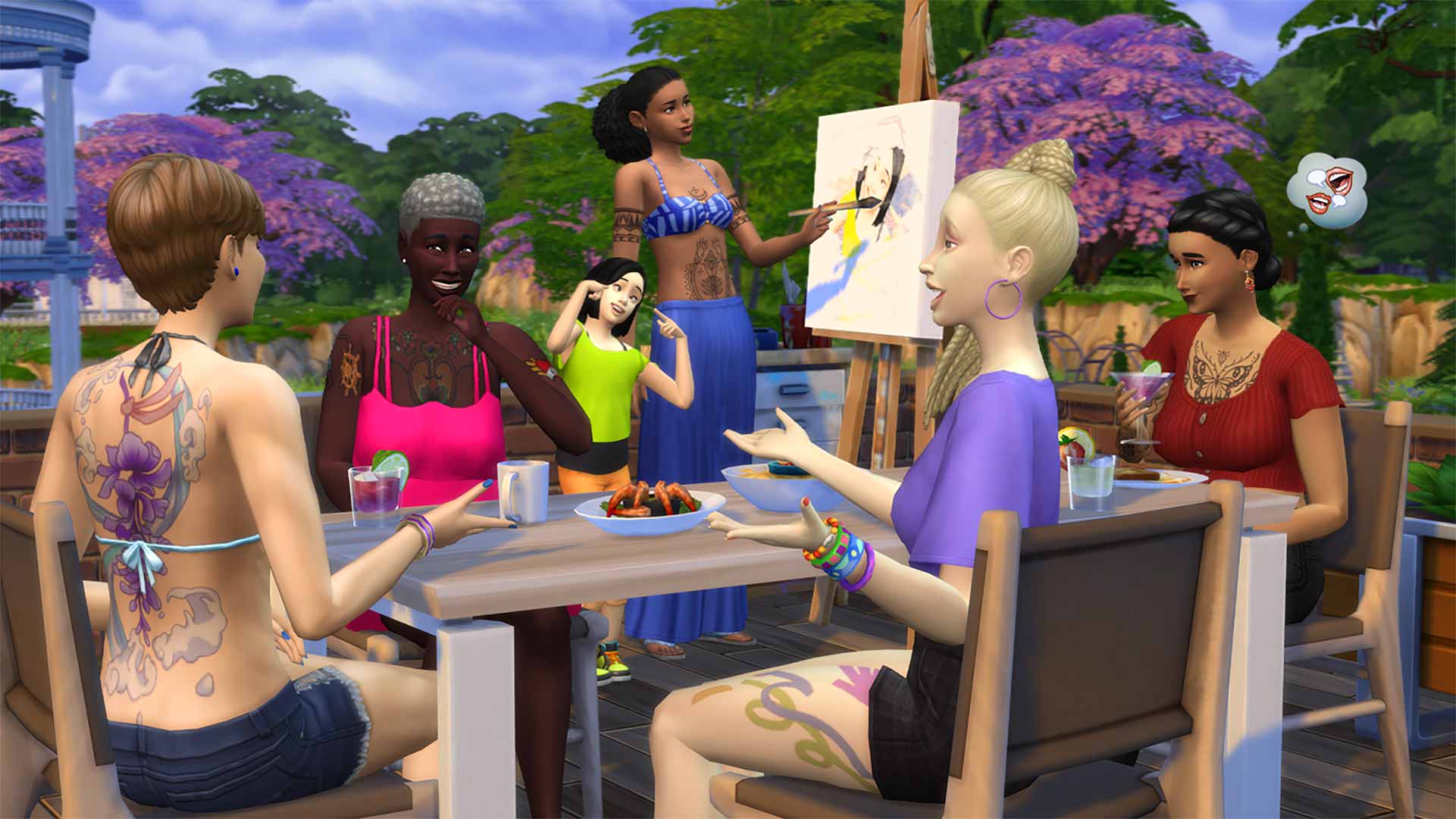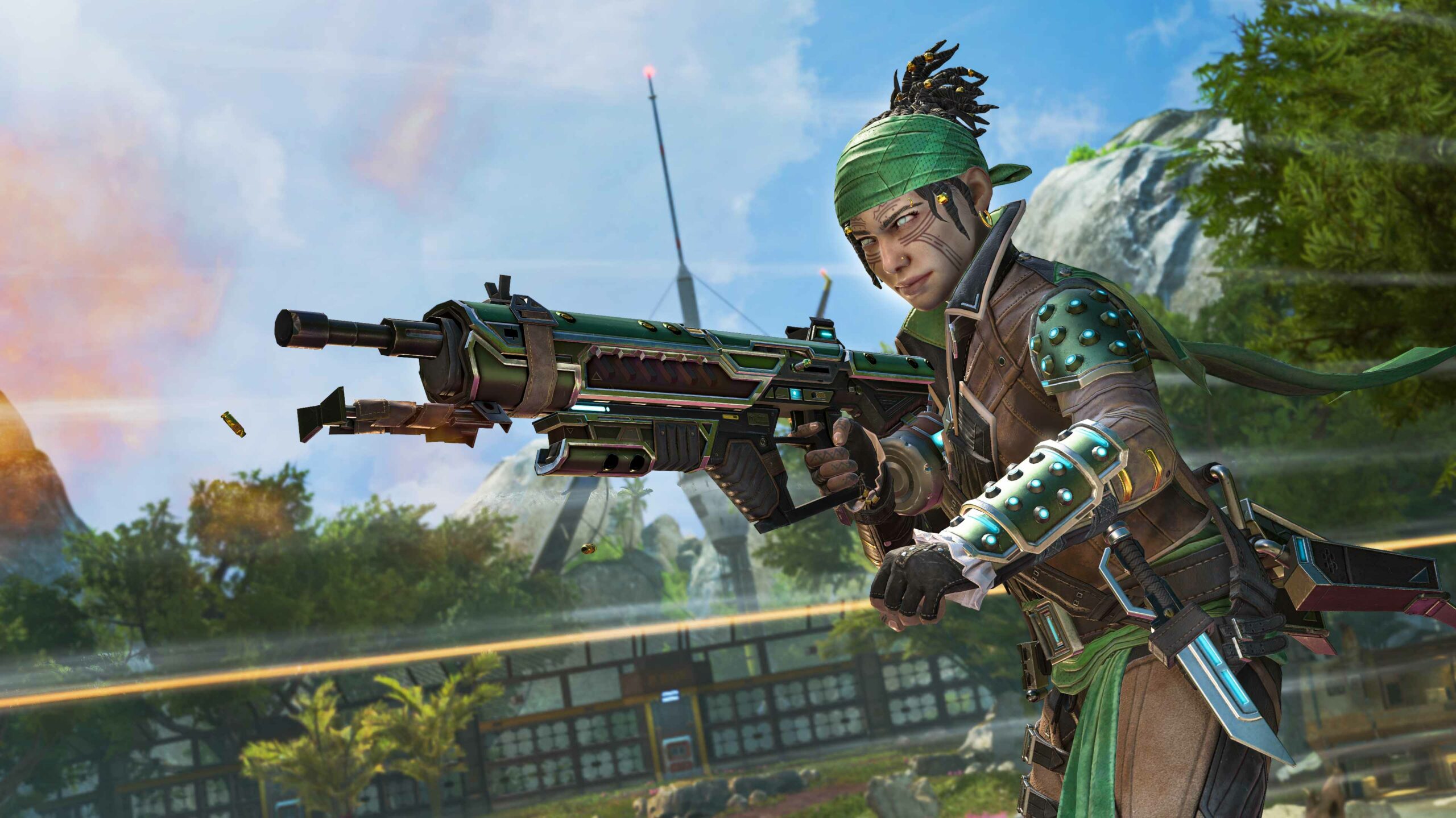
Electronic Arts (EA) is one of the biggest publishers in gaming, and Marija Radulovic-Nastic oversees a major part of the company’s global business.
As senior vice-president of development technology and services, she helps EA’s many studios with the technology and other development tools that they need to make their games. This means she actually touches every game that the company puts out.
All in all, it’s a significant position in the gaming industry, especially as a Belgrade, Serbia native who moved to Vancouver in 1993 with a background in electrical engineering. But she’s always had a passion for games, which encouraged her to eventually break into the industry via EA in 2004. In the nearly 20 years since, she’s held various roles, including director of creative services and senior development director.
With all of that in mind, MobileSyrup sat down with Radulovic-Nastic to talk about her eventful career and her passion for making way for other women to join the industry. Here’s what she had to say.
Question: I see you’re an avid gamer. What were some of your earliest memories of playing games and when did you realize that working in the gaming industry was something you wanted to do professionally?
Radulovic-Nastic: It’s a beautiful question. So I played games literally all my life. So having the game consoles like [ZX] Spectrum 48[K] and Commodore 64, so early, early days beginning with Pong and so on. And I was always in technology; my background is in engineering. But I joined the gaming industry almost two decades ago [with] EA, and it was, for me, a dream come true, since being a gamer all my life. And really enjoying that beautiful intersection of arts, design, and technology, which is gaming, as well as everything else that gaming and interactive entertainment do for all of us these days. So yeah, I’ve been playing a lot and a career in gaming was a dream come true.
Q: As you said, you’ve been with EA for nearly 20 years, and you’ve held various positions during that time. Can you talk a bit about your journey of working your way up to your current role?
Radulovic-Nastic: The industry has really changed in the last 20 years, and EA, too. So I was actually hired to lead the Central Technology Group, again, almost 20 years ago. And since then, I’ve really had a variety of positions. I actually, at some point, led Creative Service, which was the Central Art team, [and] spent a lot of time with the quality verification team because EA has an interesting structure there with QA, which is centralized. And it’s a large global organization. So I was the one helping centralize that, as well as modernizing the introduction of quality engineering. And then three years ago, I leaned back heavily again on technology, and become a de facto studio head of technology for all EA studios. So yeah, I was really, really privileged, having the opportunity to work with game teams and work on game creation, from a variety of different views and functions, but all anchored in that love of making games.
Q: I saw that you basically oversee a global team of 2,500 employees, which is huge. And one of the notable things about EA is that there are so many Canadian teams — BioWare in Edmonton, EA Vancouver, EA Motive in Montreal, etc. What’s it like for you as someone who’s based in Vancouver, and has lived in Canada for many years to have all these Canadian teams under your purview? What is it that’s so special about these Canadian teams?
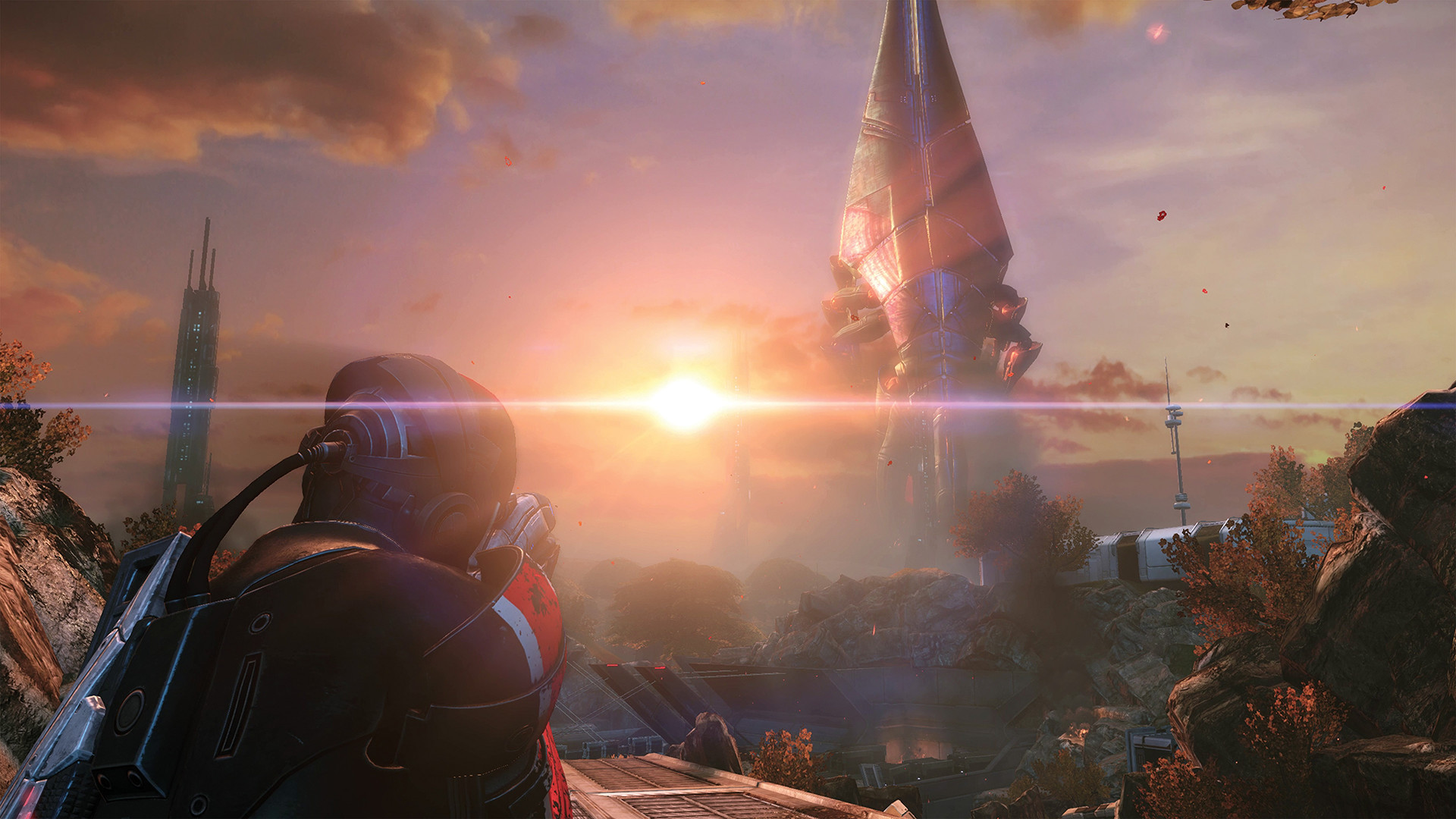
The beloved Mass Effect games, developed by BioWare Edmonton, are just some of the many titles made by Canadian EA teams.
Radulovic-Nastic: Yeah, in my role I have those functions, like the portfolio, that work within those studios, so not necessarily all those of those studios are the part of my direct organization. But I love Canada — this is where I choose to stay all my professional life. So it is really interesting looking at the Canadian gaming industry here, especially in Vancouver, as I’m based in Vancouver, as well as other Canadian cities [that are] flourishing, and EA being one of the key players there. Yeah, I have teams all around the world, but I personally am located in Vancouver and a big part of my leadership team is also here in Canada.
Q: You get your hands on every game that EA is making. People in a position such as yours often don’t like to pick favourites, but is there a particular game or even initiative within the company that you’ve worked on in the past nearly 20 years that you’re particularly proud of, and why?
Radulovic-Nastic: [laughs] That’s difficult — many of them I’ve truly enjoyed. But I can tell you that a focus on more representation of women in the gaming industry. There’s a need for becoming a role model for young women entering the industry. Given that the gaming industry is traditionally seen as a tough environment, and more male-dominated — being part of encouraging more diversity for the future of gaming, given that almost 50 percent of gamers today identify a woman, and what we want is for game makers to represent that player base. So I’ve been focusing a lot on that area, and it’s something that’s making me proud — to make this industry a little bit more inclusive and diverse.
Q: To that end, EA introduced the ‘Positive Play’ charter in June 2020. [Per EA, these are guidelines to “help make sure our games and services are an enjoyable experience for all players.” This came about following criticism of EA letting racism run rampant in EA Sports’ online modes.] For people who don’t understand — especially maybe younger gamers — the significance of something like this, why is it important for EA to have a dedicated division to promote this inclusivity and positivity? And how has this initiative evolved in the past two years?
Radulovic-Nastic: Unfortunately, the gaming industry has been seen and perceived as a tough environment — not just by game makers, but also [by] our players. EA has been hard at work within gaming environments to make sure that they’re friendly environments for everybody to play game games. Because we believe if you have a more welcoming environment for diverse players, we will see more women joining the industry, and then that can help create more well-rounded products. So to your point, one of the key elements for us was to actually prove that commitment — not just by publishing the Positive Play charter, but also [by] creating that entire department dedicated to upholding our commitment to positive play. And it’s spearheaded by one of the industry veterans, Rachel Franklin, so we have a senior vice president actually focusing on Positive Play. So the idea is to build those healthy communities championing the zero-tolerance policy for harassment or any kind of harmful behaviors or inappropriate content.
So a few examples of Positive Play at work… one is the creation of an inclusive design framework. So the idea is to create a framework that we will use as part of our game development framework that will ask game developers and game teams questions like, ‘How often do we speak to seek to tell stories of underrepresented people? Are we portraying people of diverse backgrounds with authenticity? Are we making sure that there are no unconscious biases in our narratives? How diverse and inclusive are our modes, stories, gameplay, themes, and all of that?’ So that’s become a part of the standard way that EA makes games.
Some of the examples [of how] that framework gave us results even five, six years ago… FIFA 2016 was the first AAA sports title that actually included female teams. Just as a comparison, some other AAA sports titles did that way later, like 2020 or so. The other one is the patent pledge that EA made six months ago. We realized that we have some very interesting patterns related to the accessibility of games. And it started with the Ping system that was done by Respawn’s Apex Legends team. The Apex team had heard from players that they were being attacked or targeted over voice and chat communication, particularly female players. So they created the Ping system as a means of communication among players. It’s in context; it doesn’t require the use of voice or text. Because again, they wanted to create a more inclusive, accessible experience. It was a very innovative, clear and well-received feature, and it earned a patent. So then a little bit more than six months ago, EA created that patent pledge system, where we decided to offer, free of any royalties to any game developer, our patents that are based on the accessibility of games, and that Ping system was one of them.
Q: The Entertainment Software Association notes that about 50 percent of Canadian gamers are female, yet women only accounted for 23 percent of the Canadian developer workforce in 2021. From your perspective, why isn’t that number higher, and what can the industry do to welcome more women in?
Radulovic-Nastic: Yeah, 23 percent versus 50 percent… It’s actually really upsetting that bias is contributing to those sexist stereotypes in gaming — they begin as early as childhood. Young gamers are exposed to the narrative that women gamers are not as good, are less capable, in gaming when compared to their male peers. And they also have to navigate the toxic online gaming environment from a young age. So they somehow learn that that’s the norm and that gaming is not a female-friendly space. Thus, they actually decide to [avoid] joining the gaming industry as game makers. So that’s why for us, Positive Play works on the community, as well as all other initiatives that we have internally to promote more women entering and joining the gaming industry.
Q: Another element to that conversation that I’ve heard from other people in the industry is a desire for women to not be pigeonholed into the same types of roles. Sometimes there’s this perception that they should only do communications sorts of jobs, which are obviously important, but that doesn’t open them up to, say, programming or leadership roles like yours. What are some of the ways that you think we can break down these barriers to teach people, especially young girls, that they can be a programmer, or a leader, or whatever role in the industry?

The Entertainment Software Association of Canada’s findings on how many women are employed at game studios across the country. (Image credit: ESAC)
Radulovic-Nastic: Great question and great point. A big part is having role models of women in those kinds of roles — for young women joining the industry to see where their careers can take them. But it’s also making sure that employers have that friendly environment and encouraging women to join and grow their careers in gaming companies. Giving some examples in EA, we have created ERG groups, which is Employee Research Group, and the strongest one is Women’s Ultimate Team, which is like 2,000 members last time I checked. And the focus of all that is to promote women and help them with their careers. And that means a lot — not feeling alone at any point in a career, but feeling that there is a lot of support from every aspect of the company and executive team. And touching a little bit back on role models — I think that around 25 percent, like every fourth global VP in EA, is a woman. And that’s also growing — that’s a lot. That’s the change, generally, in comparison to where this industry was 5, 10, or 15 years ago. So you see more representation on a senior level, as well as to your point in technology.
Q: Having women like you in these prominent roles helps what we’re talking about. With that in mind, who have been some role models for you, personally, either within the industry or outside of it?
Radulovic-Nastic: It’s actually a super interesting question. I have been lucky to work with some great leaders here in EA and have had a really series of fantastic bosses like people that really looked up to. Not being nice because she’s my boss now, but my manager, [EA chief operations officer] Laura Miele, she was recently championed as “the most powerful woman in gaming” [by] Bloomberg and some other [outlets]. And I do believe that her impact on gaming is phenomenal. Her background is not in technology, but she has a profound impact on gaming. So that’s been somebody who I look up to EA for a long, long time, and she’s also a veteran in this industry. Outside of the industry, I don’t know. I wouldn’t say that there is somebody specifically who was my role model that I always look up to. But there were a lot of people that I was lucky to work with — some great leaders in this industry.
Q: Another part of bringing more women into the industry — people I’ve spoken to in the industry have mentioned the importance of starting young and promoting STEM education and things of that nature. From your perspective, how should governments and schools help promote the idea that you can work in games — letting girls know that this is an option?
Radulovic-Nastic: Yes, absolutely. So I think that absolutely, schools and governments promoting STEM, but also employers. As I mentioned with gaming, making sure that it’s not that toxic environment so that they want to play games and join the industry. But also making sure that we do work with universities and have the opportunity to champion what we do. Universities, but also to your point, even earlier, when young people make a choice about career — like high school, and even before that. So definitely more women in STEM is the future, and then companies like EA should and will continue to play a big role there.
Q: So with all of that said, what advice would you give to women looking to break into the gaming industry?
Radulovic-Nastic: It’s interesting. In 2012, I was privileged to have the [women-focused non-profit] Minerva Foundation [honour me with an award for leadership and excellence in the technology industry]. At that time, I gave an interview for, I think, The Vancouver Sun, and I was encouraging women to join the gaming industry. But now, reflecting on that time, it was just ‘oh, I encourage you to join the gaming industry.’
Now, we have proof that we are hard at work on making this industry more diverse and inclusive — everywhere from, as we discussed, Positive Play to what employers and big gaming companies are doing to welcoming a more diverse workforce. I find interactive entertainment and gaming to have such a profound impact on the way we learn, the way we connect, the way we interact with each other, the way we engage in problem-solving. And it’s an incredibly interesting combination of art and technology. So I would definitely encourage young women to look at the industry. We are hard at work to make it way more inclusive and diverse. And the space is incredibly interesting. It’s a great time to be in gaming, given where gaming is going.
This interview has been edited for language and clarity.
Images credit: Electronic Arts
Correction: This piece previously said Laura Miele was EA’s chief studios officer. She is actually chief operations officer (COO). It has been updated accordingly.
MobileSyrup may earn a commission from purchases made via our links, which helps fund the journalism we provide free on our website. These links do not influence our editorial content. Support us here.

